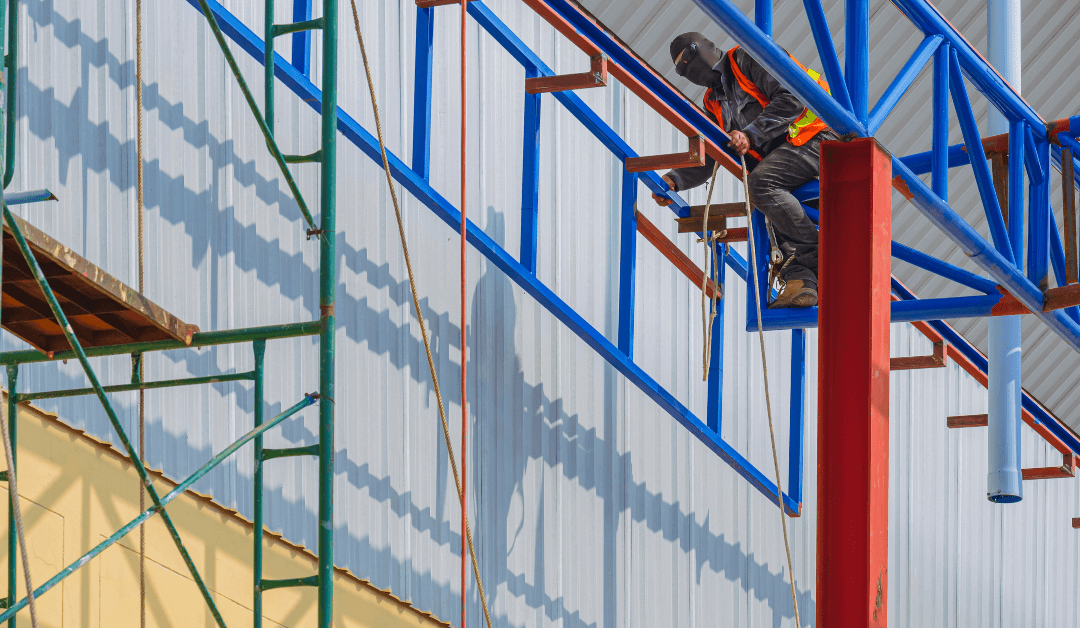Looking to have your pre-engineered metal building? You should familiarize yourself with the metal supply of materials, and since you are reading this, you are on the right track! These structures consist of the main and secondary metal building materials and sheeting or cladding.
Metal building materials
- Main elements
They include the mainframe, rafters, and columns. The mainframes are the building’s rigid steel frames, consisting of tapered rafters and tapered columns. Generally, the columns transfer the vertical loads to the foundation, while the rafters are a series of sloped structural members that stem from the ridge to the wall-plate hip, downslope perimeter, or eave. Rafters offer support to the roof deck and its loads.
- Secondary elements
They support the walls and roof panels and include purlins, eave struts, and girts. Purlins and girts are utilized on the roofing system. The grits are also used on the wall, while the eave struts are perfect at the roof and sidewall intersection. Typically, eave struts are 104mm wide and 200mm deep for the top flange, and 118mm wide for the bottom. Regardless, both are made parallel to the roof slope, with each having a 24mm stiffener lip.
Bracings; since winds and earthquakes are threatening factors to consider, cable bracing is incorporated. It ensures stability against forces of the longitudinal direction. The roof and side walls will also incorporate diagonal bracing.
- Sheeting/ Cladding
Mostly, the sheets of these structures are base metal, which can either be Galvalume coated steel that is per ASTM A 792 M grade 345 B or aluminum that conforms to ASTM B 209 M.
- The extras
- Turbo ventilators
- Bolts
- Lovers
- Skylights
- Fasteners
- Doors and windows
- Roof curbs
- Metal building installation
As the structure is shipped or transported, you can start working on the site by pouring the concrete foundation with the anchor bolts set on the curing concrete. Finally, you can attach the mainframe to the anchor bolts when the building arrives. Just like that, you erect the building. But are we done? Far from it. The structure is somehow open at this point, and if a strong wind comes along, you bet it will probably move in obedience, and you may not be wrong. So, something needs to be done, and that will be bracing. As mentioned earlier, it transfers the longitudinal loads to the sidewall bracing or portal frames. The purlins, eaves struts, and girts are connected to the mainframes. The next step is framing the windows and doors. For every place facilitating a window or door, framing has to be done. Typically, the windows and doors are pre-fabricated units that fit right into the openings.
- Securing a metal building
As you consider a pre-engineered structure, you probably wonder how to secure the building. And yes, you can! Consider the following:
- Bolster the doors and windows
For the doors, consider the solid core or steel ones. Additionally, opt for reinforced models which feature solid paneling and metal framing on the inside.
Put up thick metal mesh over the exterior part or internal spring-loaded bars for the windows.
- Alarms
Install alarms in all windows, doors, and any other entry point. Also, motion-activated lights and cameras will come in handy.
- More reinforcements!
Internal reinforcements like hardware cloth, concrete reinforcement mesh, and even inner layers of plywood will do the trick in frustrating the unlawful entry while notifying you early enough.
Get to know metal building materials
Knowing the metal building materials of a PEMB is just but solving one piece of the puzzle. You must ensure you get the right steel company to help you build a high-quality structure that can withstand adverse weather elements and prevent pests and insects from entering. An expert installation will also influence longevity, so doing it right is crucial and highly advisable.

